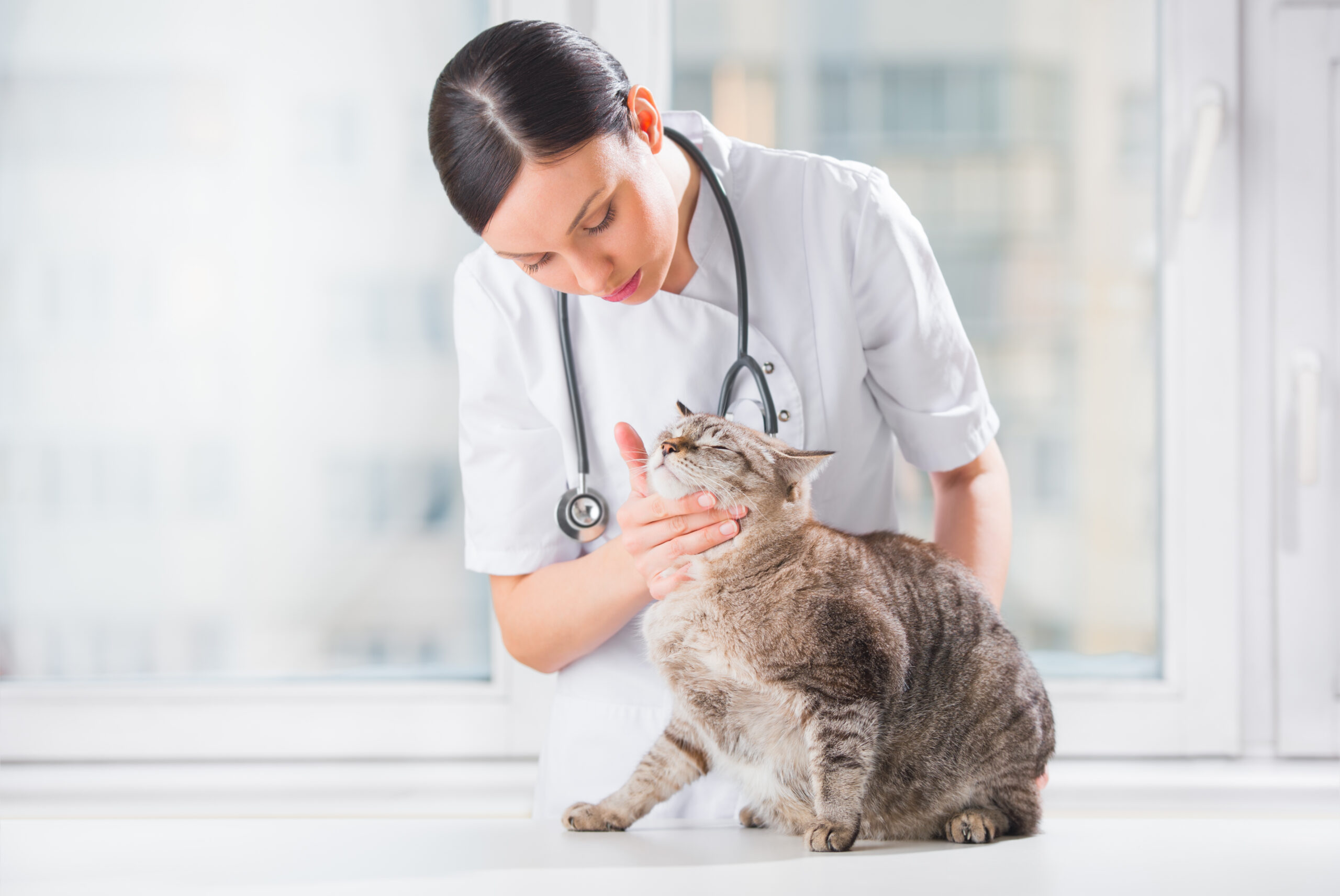What is a pre-existing condition in pet insurance?
A pre-existing condition is one that exists or occurs before your pet’s insurance policy begins (and during the exclusion period). It is rare for pet insurance providers to cover any pre-existing conditions. If they do, it will usually require some time for that condition to no longer exist. before they do.
There is a common misconception where people assume pet insurance is similar to human health insurance. If anything, it’s closer to car insurance. Here is an example to help explain:
Let’s say you buy a car with a damaged rear bumper, but you don’t currently have car insurance. Then one day you finally decide to get car insurance, and several months later, you are involved in a car accident where someone T-bones the front of your car. Your insurance provider will pay for damages sustained in the front T-boned accident but will not reimburse you to fix the rear damaged bumper as it was there before you got the car insurance.

How we used to deal with pre-existing conditions and how most insurers still do:
You could sign up and become a policy holder, not knowing whether a condition is considered pre-existing condition and therefore not covered.
It could be years, until it comes time for your first claim – this would only end up in tears, if you are told “sorry this is not covered as it is a pre-existing condition”.
Most pet insurers don’t ask for a copy of the veterinary history until the first claim, so there is no clarity on coverage until then.
Pet insurance doesn’t cover everything, so it’s important to find out what it does and doesn’t cover.
What we do now in our efforts to manage the expectations and make this fairer for all of our customers.
We offer a free pre-existing condition assessment when you first start your policy.
This will give you more clarity when you start your cover on whether your pet has any conditions that could be considered pre-existing conditions.
We aim to complete this within the first 30 days, within your cooling-off period, so that you can decide whether you want to continue with us, but the timing depends on how quickly you can supply your vet details to us and how quickly your vet clinic can get back to us with your pet’s history. -Therefore, doing it as soon as you can is to your benefit.
| Some other pet insurance providers | Petsy Pet Insurance |
|---|---|
 Lack of opportunity to find out what pre-existing condition may apply Lack of opportunity to find out what pre-existing condition may apply |  Free pre-existing assessment offered, as soon as you start your policy Free pre-existing assessment offered, as soon as you start your policy |
 Veterinary history often not assessed until the first claim Veterinary history often not assessed until the first claim |  Transparency on coverage Transparency on coverage |
 Could be paying your premium for years not knowing if your pet has any pre-existing conditions that are not covered Could be paying your premium for years not knowing if your pet has any pre-existing conditions that are not covered |  We can ask your pet’s veterinary history within the first 30-days that you start the policy We can ask your pet’s veterinary history within the first 30-days that you start the policy |
 Less clarity on any pre-existing condition exclusions Less clarity on any pre-existing condition exclusions |  Gives you time to make changes and amend your policy Gives you time to make changes and amend your policy |
 More clarity upfront on whether your pet has any pre-existing conditions that aren’t covered More clarity upfront on whether your pet has any pre-existing conditions that aren’t covered | |
 Friendly Australian customer care team will guide you through your pre-existing condition assessment journey Friendly Australian customer care team will guide you through your pre-existing condition assessment journey |
As pre-existing condition assessments are carried out based on your pet’s veterinary history. If we consider something as a pre-existing condition, it’s highly likely that most other pet insurance providers will do the same.
The biggest difference with us is that we offer to conduct a pre-existing assessment at no cost to you, as early as possible to help you manage expectations.
We believe that not doing this can lead to tears, especially if you make your first claim months or years into your policy period without knowing what constitutes a pre-existing condition.”
Again, if a condition is considered to be a pre-existing condition by us, then, generally speaking, it is likely that it won’t be covered by another provider either.
Why is it important to understand pre-existing conditions?
When you decide to purchase pet insurance for your pet, one of the most important things for you to think about is what conditions, injuries or illnesses they have had before the start of cover under the policy and what conditions occur during an applicable waiting period.
The reason it is important for you to think about this is because Petsy Pet Insurance, like most pet insurance policies, has an exclusion for pre-existing conditions, which means there is no cover for vet costs associated with the treatment of a pre-existing condition. And unlike private health insurance for humans, conditions that arose while being covered by one pet insurance provider are generally not covered by another provider if you switch your pet insurance provider.
Benefits of completing a Pre-existing Condition Assessment
(Also known as a PECA)
- Claims are assessed based on your pet’s veterinary history.
- A pre-existing condition assessment will give you more clarity on your coverage.
- We aim to be transparent, so you can be clear and upfront on whether anything isn’t covered.
- Some other pet insurance providers don’t ask this question upfront, which means you won’t find out what’s considered to be pre-existing conditions (and not covered by the policy) until it comes time for your first claim. This could be a few years down the track.
- Completing this process upfront gives you time to change or amend your policy.
- It helps you avoid unpleasant surprises at claim time – insuring your pet for years and then find out at a claim time that a condition was considered pre-existing conditions, all along.
What is a pre-existing condition?
Anything that your pet has shown signs or symptoms of before the policy’s waiting periods end (including prior to the start of the policy) is considered a pre-existing condition. We don’t cover pre-existing conditions, but we’ll help cover any new accidental injuries and illnesses as part of your policy.
Why complete a PECA?
A pet insurance policy is designed to help cover the unexpected, so any illness, health condition or injury that have occurred in the past, or are in the process of happening, or shown signs or symptoms of in the past, are not covered under the policy. These are pre-existing conditions that are not covered by your policy.
Most pet insurance providers won’t ask to check if your pet has any pre-existing conditions until your pet runs into a mishap and it comes time to make a claim.
At Petsy, we value transparency. It is very important to us that we are as clear and upfront as possible about the cover available under the policy, so we offer an opportunity for you to do a Pre-existing Condition Assessment (PECA) that can be completed as soon as you purchase a policy for your pet, to help you understand what the policy does and does not cover.
If a pre-existing condition isn’t covered by us, it’s likely it’s not going to be covered by any other pet insurer either.
You can fast-track your future claims process by providing your vet details upfront. Completing a Pre-existing Condition Assessment will also mean your claims process will be quicker, smoother and any approved claims get reimbursed faster.
Another Relatable example
You wouldn’t be able to buy car insurance after your car was in an accident and expect insurance to help cover the costs of the damage to your car. Similarly, pet insurance is not designed to protect your pet from something that has already happened or is in the process of happening to your pet.
How do I find out whether my pet has any pre-existing conditions?
To find out whether your pet has any pre-existing conditions, you can apply for a Pre-existing Condition Assessment (PECA) by sending us an email with a list of your pet’s vets. We offer this service so you can find out as soon as you start your policy whether your pet has any pre-existing conditions that aren’t covered.
What happens during a Pre-existing Condition Assessment?
Once a list of your pet’s vets has been provided to us, we will contact the vets for your pet’s veterinary history to complete the assessment and an updated Certificate of Insurance will be issued confirming the outcome.
If your pet has any pre-existing conditions, we’ll also advise whether these can be reviewed at a future date, the earliest future date you may request a review and any supporting information we will require at that time. Please note that exclusions are not automatically removed at the exclusion review date, and they’ll only be removed if the medical evidence confirms the pre-existing condition has been successfully treated or resolved. If a pre-existing condition is not reviewable, it means that it’s permanently excluded from your cover.
All PECAs are completed largely based on the veterinary history we receive from your vets.
How long does a PECA take?
The process of completing a Pre-existing Condition Assessment usually takes between 2-10 business days, depending on the age of your pet and how many vet clinics we have to contact for veterinary histories and how fast they’re able to send these histories to us, so that we can assess them.
Helpful Tips
- Be mindful of the Waiting Periods that apply to your policy. These Waiting Periods have to be served symptom free before your coverage kicks in.
The waiting periods are:
Injury (except Specified Conditions): 1 day
Illness (except Specified Conditions): 14 days
Optional Dental Illness
For pets under 1-year-old: 14 days
For pets of 1-year-old and over: 6 months
Optional Behavioural Conditions: 6 months
Specified Conditions: 6 months
- As any future claims and insurance related assessments are completed largely based on your pet’s veterinary histories, you can always ask your vet if there’s anything written in the clinical notes during your visit for extra transparency. Whilst a veterinarian or vet nurse might say your pet is generally healthy, asking the question can help you understand if there’s anything you should be mindful of later down the track when it comes to making a claim.
- Supply your vet details to us as quickly as possible so we can complete your Pre-existing Condition Assessment during your cooling off period. The timeframe to complete this will depend on how quickly you can supply your vets’ details to us and how quickly your vet clinic can get back to us with your pet’s history. Doing this as soon as you can is for your benefit.
If your pet does have pre-existing conditions
Whilst they won’t be covered for the specific illness or injury considered as a pre-existing condition, they’ll still have coverage for a large number of other unrelated injuries or illnesses. Petsy Pet Insurance covers an extensive list of different health emergencies and illnesses, ranging from broken bones, accidentally swallowing things, all the way through to diabetes and cancer treatment. Here is a list of hundreds of conditions covered under the Petsy Pet Insurance Policy
Whilst our pet insurance doesn’t cover pre-existing conditions, it can still be a lifeline in avoiding potentially large vet bills and be your ticket to affording the level of care for any new health issues or accidental injuries that arise in the future.




